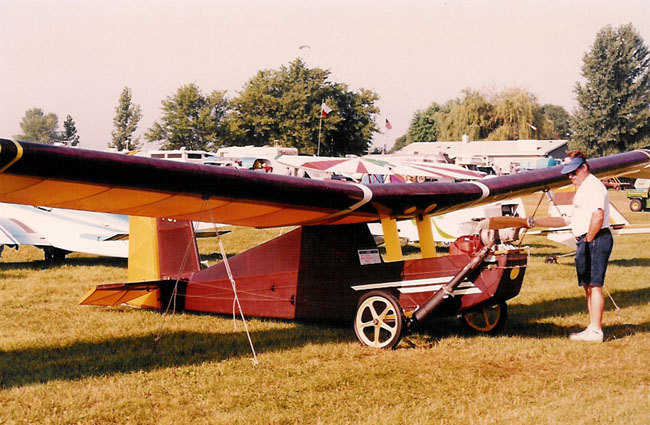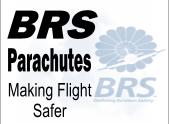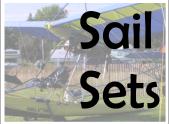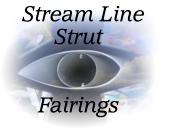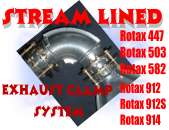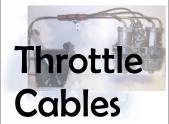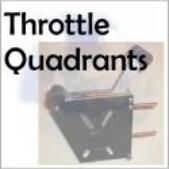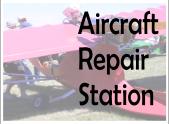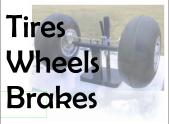|
These ventures have weakened the credibility of the
sport, while souring the distraught plans-buyers toward new designs
which appear. In many instances, "plans"
have been sold for aircraft which have either never flown, or were
structurally unsound.
These observations of the sport, combined with a conviction that flying
should be as inexpensive as possible, have led to the development of a new
homebuilt ultralight design, the Sky Pup.
The Sky Pup The Sky Pup is an outgrowth of an earlier design, the "Blue
Light Special," which was built by some fellow engineers and myself in
Wichita in 1980. It was a forerunner of todayís current crop of
airplane-like ultralight designs, and proved to be a successful design
exercise, exceeding original performance estimations on only 10 hp. (Many
readers will remember the article on the Special in the August 1981 issue
of ULTRALIGHT.) Response to the Special was remarkable, despite the
designersí statement that no construction plans would be made available
for the bird. It seemed that the Special had hit an urgent need in the
growing ultralight movement: the need for a simple and inexpensive
homebuilt ultralight.
Using insights gained during development and flying of the Special, I
began work on a similar follow-up design, incorporating changes and
improvements to add durability and
buildability. The Sky Pup is the result these refinements.
From its conception, the Sky Pup has been developed for the sole
purpose of being reproduced by a builder working in a minimally equipped
home shop. Many dimensions in the structure were determined by stock sizes
of building materials. Even the chord of the wing was sized to allow use
of standard fabric width during the covering process, thus eliminating the
need for time-consuming seams. Similarly, the D-skins of the forward part
of the wing were dimensioned to allow use of 2í x 4í plywood sheets with
no waste, no waste, and to save procurement the time since they can be
shipped UPS and larger ones cannot. These may appear to be minor design
details, but their effect on cutting building time and project cost is
very significant.
As with the Special, primary construction materials are wood and foam.
Throughout the structure, foam is used as shear web material, while wood
capstrips are used to carry bending loads. This construction method lends
itself to homebuilding, since it eliminates the need for lots of jigs and
fixtures. As with the popular foam-and-glass construction process, the
foam is the jig.
The wing is fully cantilever, having no struts or wires. It features a
single spar, and is comprised of three parts: a center section which is
permanently attached to the fuselage, and two detachable outboard panels.
The center section width was sized to allow the disassembled bird to be
trailered down the road with adequate clearance. The outboard panels are
attached through sets of upper and lower attach fittings in typical
airplane fashion.
The Spar is constant depth in the outboard panels, but increases in
depth from the wing joint to the fuselage. It features a large
cross-section foam shear web with wood caps on the upper and lower
surfaces. Ribs are also made of foam with wood caps. The result is a wing
structure which is very light, yet has a positive ultimate load factor of
6.
Construction of the tail feathers is similar to the wing, except with
two spars in the stabilizers and one spar in the movable control surfaces.
Each control surface employs diagonal ribs to provide torsional rigidity.
The tail group weighs only 8 pounds, complete with fabric and finish, and
like the wing, is entirely cantilever.
Fuselage construction follows that of the Special, consisting primarily
of a foam box structure with wood longerons at the corners of the
cross-section. The box assembly is reinforced at concentrated load points
with plywood gussets of the appropriate thickness. The seat back and
floorboard are covered with plywood to add strength and durability. The
landing gear of the Pup is a tapered maple beam, which is, in fact, a
wooden spring. It has proven to be light, durable and inexpensive
. . . in keeping with the overall design
concept. Since the Pup has not been flown off of anything remotely
resembling a paved surface, the gear has received extensive service
testing in rough conditions without showing any signs of the hard usage.
The Sky Pup prototype is powered with a Cuyuna 215RR engine with a
California Power Systems 2.25:1 reduction drive . This package swings a
58-inch propeller, which provides ample thrust without unduly taxing the
engine. Engines of considerably less power will provide good performance,
especially at the lower elevation. Larger engine will not be allowed
because of the danger of inadvertently exceeding the FAA-imposed maximum
speed.
The rudder and elevator control systems are extremely simple. The left
and right elevators are operated individually through separate cables on
each side of the airplane. The rudder is actuated by a rudder bar, and
both the rudder cables and the elevator cables run through fairleads on
the sides of the fuselage. No pullies [sp] are needed anywhere in either
system, which saves cost and building time. The control stick is mounted
in typical airplane fashion between the pilotís legs.
Entry to the cockpit is achieved by stepping into the fuselage and
standing on the ground through a toilet-lid-sized hole in the floor. After
sitting down, the pilotís feet are retracted to the rudder bar area and
the hole is zipped shut. The fit is comfortable even for tall folks, with
access to the controls being very natural. The plans for the Pup allow
tailoring the head- room to accommodate the builderís physical
proportions.
The Sky Pup prototype has been flown by many people of various piloting
abilities with no problems encountered. Most of these have been regular
aircraft pilots with no previous ultralight experience. Without exception,
they have four comments upon introduction to the Pup. When they first see
it, they exclaim that it looks like an airplane and chide me for
telling them it was an ultralight. Upon flying it, they have three
comments: first, that they were not expecting an ultralight to have the
performance and "feel" of a regular airplane; second, that they were
expecting to fly something which was marginally controllable rather than
crisp and responsive; and third, that the Pup is absolutely the easiest
machine to fly that theyíve ever been in.
The small size of the horizontal tail and elevators, combined with the
relatively short tail arm and well-forward C.G., make the Pup elevator
power limited. This prevents the pilot from being able to induce extremely
nose- high attitudes from any normal flight situations. The elevator power
is sufficient to provide ample flairing ability during the landing
maneuver and complete control capability in flight. Approaches and
landings have been made with the stick in the full-aft position, the
result being a slow, mush descent.
The Sky Pup possesses light controls and responds readilto to input
from the pilot. Wind in the cockpit is noticeable but not severe, with
goggles being optional equipment except when bugs are thick or the air is
very cold. An optional windscreen could be incorporated easily, and would
undoubtedly aid the overall appearance of the machine.
The major difference a person will notice between flying the Pup and
flying other ultralight designs is its aerodynamic cleanness. The craft
has an honest 12:1 glide ratio, which is between two and three times the
glide performance of the standard tube-and- wire machines. This
characteristic shows itself in many ways, but primarily in penetration,
reserve power, and the ability to glide for a reasonable distance
power-off, in fact, the most enjoyable pastime in the Sky Pup is to climb
to altitude under power and then glide or soar deadstick (without the
sound of the engine). The engine can be restarted in the air quite easily.
The Sky Pupís lack of ailerons, spoilers, or spoilerons has been of
concern to some people who have never flown it or seen it fly. Some
discussion about why they were not included is probably in order.
Because of their limited empty weight and maximum stall speed,
ultralights are by edict very low wing- loading aircraft. As such, they
are much more weather limited than heavier, faster aircraft, and will not
venture subjection to severe weather conditions. Due to their size and
speed parameters, they will not be noted as having high roll rates or
crisp roll response, no matter what type of lateral control device is
used. Although I have flown many 3-axis ultralights, Iíve yet to fly one
where the lateral control device was more effective as a control benefit
than as a selling feature.
Contrary to what some would advertise, an ultralight does not need the
ability to land in 90 degree crosswinds of 20+
mph. Anyone who has flown ultralights or has watched someone else fly in
bad weather conditions will testify that this is no time to be out flying
around, no matter what type of ultralight you have. If winds are
substantial enough to pose crosswind problems, they are substantial enough
to cut ground speed and roll-out to almost nothing, and allow landing
across the normal axis of the runway or field.
We make no apologies about the Pupís 2-axis control system. It flies
beautifully with rudder and elevator, having a roll rate (through dihedral
effect) which will rival anything around. The Pup has been flown safely in
conditions when many 3-axis ultralights were "sitting it out". When
weighed against the extra cost, building time, weight, and complexity of
adding these devices, leaving them off was much more attractive. To a man,
all the pilots who have flown the Pup agree that ailerons or spoilers are
not needed.
The Sky Pup is not intended to be the ultralight for everyone.
Although it is more portable than many designs, it cannot be "rolled-up"
and carried on top of the family station wagon during vacation. Since it
involves more work than a weekend assembly of pre-made parts, it will not
attract those people who must fly now, regardless of cost. The Pup
has been designed to fill a growing void in the ultralight movement......,
the need for an easy-to-fly, easy-to-build, LOW-COST ultralight. We
feel that these objectives have been achieved, and are confident that the
proliferation of the Pup will prove its success.
Check out:
http://members.truepath.com/dodger47/
Check out: http://www.skypup.net/ |
